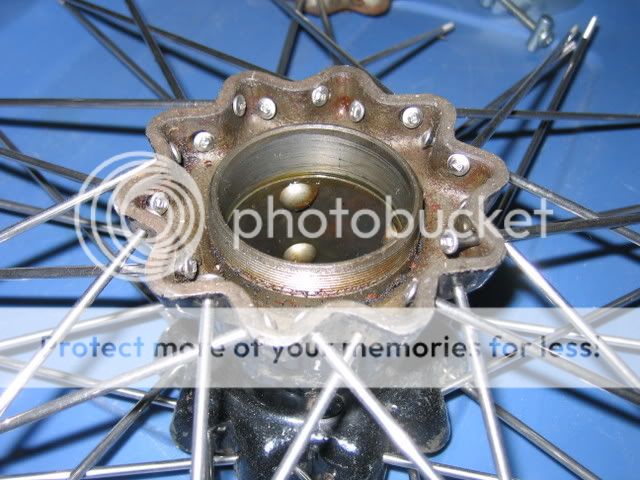7aliveatlast7
the bearded hessian
ok, i am going a little nuts here. totally blew my budget on spokes from cognito moto (buchanans), and i'm having a real problem getting them to work on my rear hub. i am lacing up a 17" drop center rim to my '76 honda cb750 hub and a 19" harley drop center rim to my cb750 front hub. the front laced up no problem, it came together beautifully and is everything i dreamed it would be. the rear, on the other hand, is giving me some problems.
i laced up the inner spokes on each side without a hitch. i then started on the outers on one side, and was only able to get 7 out of 10 in on that side because everything was getting too tight and i had no wiggle room any more. just for kicks, i flipped the wheel over to see if i could get any outers to work on that side, and no way, i couldn't get anywhere near the rim holes i needed to be in. something was holding the rim to the other side of the hub, and tight.
so i walk away before i lose my cool, and then go back and try again. i did all the inners once again, and did only 4 outers, evenly spaced, on one side before flipping to see if i could get any outers on the other side again. still no dice! something about putting the outers on the first side was eating up any slack i needed for the other side. so i snoop around, and it seems like on the first side i put them on, the swaged area of the outer spokes is right up against the edge of the hub, like so:

this would explain why when i flip the wheel over, i have no slack to get the outers spokes to their appropriate holes. the outers on the first side cannot reach the appropriate angle and are being held out by the swage/edge of the hub, thus holding the rim away from the other side of the hub
my question is, what the heck do i do? i was thinking of filing little grooves in the edge of the hub for the swaged areas to seat into the hub flange so the outer spokes could angle in more, but it seems like i should be able to lace these up without such drastic measures. i tried contacting devin at cognito moto for some tips, as i figured he's built a few 750's with these spokes, surely he's dealt with something like this. that was earlier today and i haven't hear anything back yet. i know he's busy and i don't want to be a pest, so if anyone else has any clues, please let me know.
is it possible the outer spokes need a different bend or slightly longer head, or do i have to butcher my powder coated rim? hopefully there's a solution that doesn't include spending more money :-\
oh, and here's my lacing pattern, if that helps at all. just have the inners on in this pic, as well as one outer just to show what direction i'm heading.

i laced up the inner spokes on each side without a hitch. i then started on the outers on one side, and was only able to get 7 out of 10 in on that side because everything was getting too tight and i had no wiggle room any more. just for kicks, i flipped the wheel over to see if i could get any outers to work on that side, and no way, i couldn't get anywhere near the rim holes i needed to be in. something was holding the rim to the other side of the hub, and tight.
so i walk away before i lose my cool, and then go back and try again. i did all the inners once again, and did only 4 outers, evenly spaced, on one side before flipping to see if i could get any outers on the other side again. still no dice! something about putting the outers on the first side was eating up any slack i needed for the other side. so i snoop around, and it seems like on the first side i put them on, the swaged area of the outer spokes is right up against the edge of the hub, like so:

this would explain why when i flip the wheel over, i have no slack to get the outers spokes to their appropriate holes. the outers on the first side cannot reach the appropriate angle and are being held out by the swage/edge of the hub, thus holding the rim away from the other side of the hub
my question is, what the heck do i do? i was thinking of filing little grooves in the edge of the hub for the swaged areas to seat into the hub flange so the outer spokes could angle in more, but it seems like i should be able to lace these up without such drastic measures. i tried contacting devin at cognito moto for some tips, as i figured he's built a few 750's with these spokes, surely he's dealt with something like this. that was earlier today and i haven't hear anything back yet. i know he's busy and i don't want to be a pest, so if anyone else has any clues, please let me know.
is it possible the outer spokes need a different bend or slightly longer head, or do i have to butcher my powder coated rim? hopefully there's a solution that doesn't include spending more money :-\
oh, and here's my lacing pattern, if that helps at all. just have the inners on in this pic, as well as one outer just to show what direction i'm heading.









